Audi Q2 long-term test
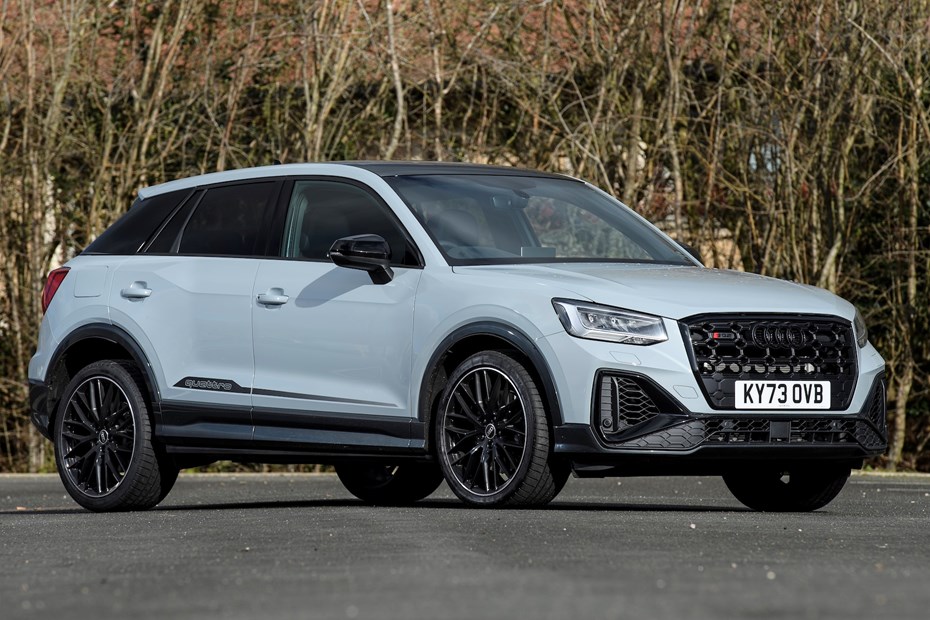
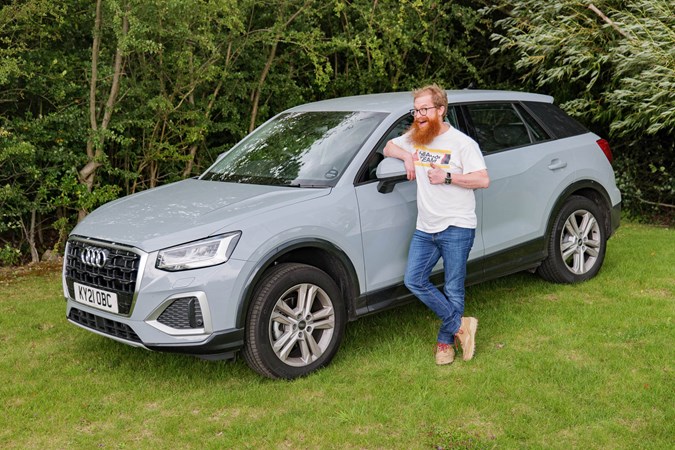
If you’re after an SUV with a premium badge on its snout, the Audi Q2 is one of the cheapest options out there. To find out if it should sit on your shopping list, New Cars Editor Alan Taylor-Jones is running one for six months.
Jump to:
- Update 2: Comparing it with an Audi SQ2
- Update 3: Interior impressions
- Update 4: Big enough for babies?
- Update 5: How economical is the Q2 35 TFSI?
- Update 6: Goodbye Q2
Update 1: Hello there
Despite being on sale since 2016, the Audi Q2 sits in a surprisingly barren niche of the small SUV segment. That’s because it’s really the only car of its type that marries compact dimensions with a properly posh badge.
Don’t believe me? Well, BMW, Lexus and Mercedes SUVs start at around £30,000 where the Q2 can be had for quite a bit less than £25,000. I dare say some of you will be itching to write in to point out that the DS 3 Crossback exists for similar money, but if you have to explain to friends that you’ve bought a premium SUV, it probably won’t appeal to the true badge snobs out there.
The big question is whether you should pay a little more for that badge, especially considering the small SUV segment is ram-packed with impressive rivals – far more than when the Q2 was originally introduced. Given that Audi titivated the Q2 relatively recently with fresh looks and a smattering of new tech, it seemed a good time to answer that.
What’s the spec?
Seeing as we’re the sensible sort here at Parkers, I avoided the temptation of a powerful (but thirsty) engine coupled to an unnecessary four-wheel drive system and a fancy trim level. That’s left me with a 35 TFSI DSG Sport, or in English a 1.5-litre turbocharged petrol engine with a seven-speed automatic gearbox, front-wheel drive and second-rung trim.
With 150hp and a 0-62mph time of 8.6sec, this is a very different kind of Audi Sport to the 1980s rally monsters I idolised as a child, albeit one that’s far more sensible. It might not spit flame or make noises that make me go all weak at the knees, but claimed economy of up to 46.3mpg certainly appeals to my adult self.
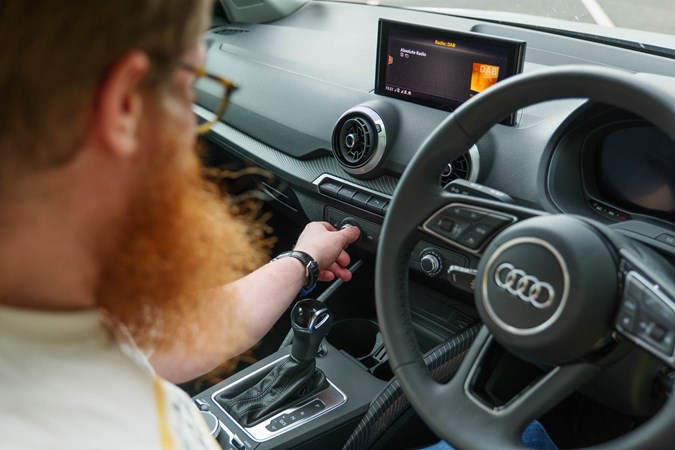
Any extras?
I’ve added £575 worth of Arrow grey paint (not primer as my wife suggested), £400 of upgraded ambient lighting inside to make it feel a little more special at night and crucially the Comfort and Sound pack to basic Sport trim. This combines heated front seats, front parking sensors to add to the standard rears, a rear-view camera and a 705w Bang & Olufsen stereo that sounds fantastic.
That extra equipment and the automatic gearbox means this is by no means a cheap SUV, costing almost £32,000 after options. To put that into perspective, the Car of the Year winning Ford Puma is available in top-spec trim with almost every option thrown at it for less. That said, you can spend well in excess of £40,000 on a range topping Q2. Yikes.
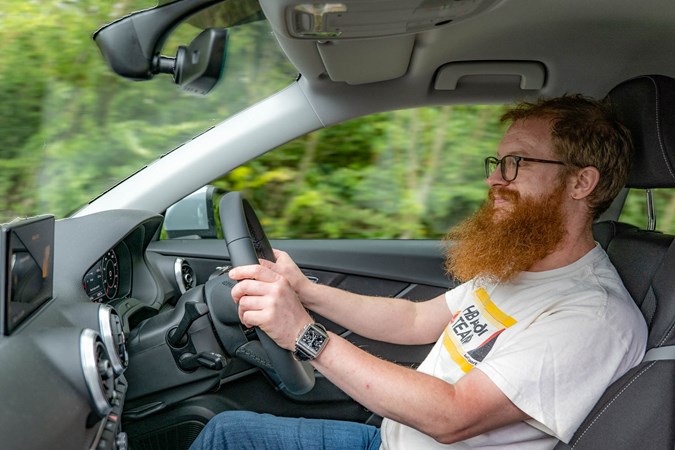
How’s it going so far?
Initial impressions are good, though. Although this is now one of Audi’s oldest interiors, it highlights a few areas where the German brand has actually taken a step backward – something I’ll come onto in a future update. The 1.5-litre engine pulls gamely after some hesitation, while a long motorway journey from the office in Peterborough to my current abode in Sussex saw economy that was surprisingly close to the official figures.
Some may scoff at the relatively tiddly wheels of Sport trim – at 17-inches they’re a good two inches smaller than what you get on top trims – they do result in a fairly comfortable ride, albeit in a firm-edged Germanic kind of way. Expensive it might be, but already I can see why you might be tempted.
Update 2: Temptation waits
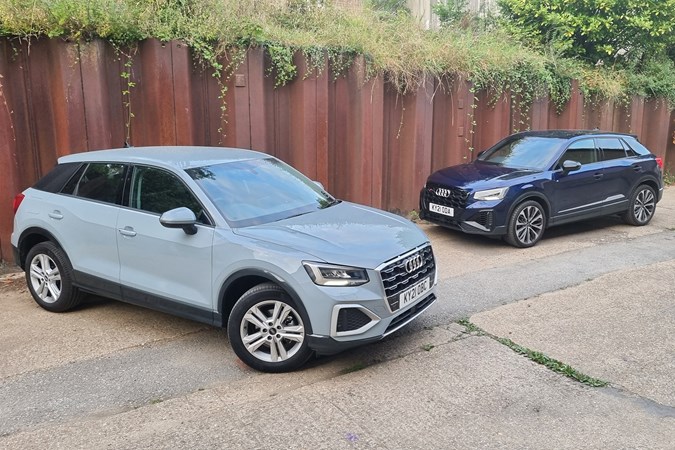
A long drive in my Audi Q2 had me pondering, would my life actually be any better if I’d succumbed to temptation when configuring my car? Don’t get me wrong, my Q2 is proving to be a fine companion, as highlighted by an impressive third place finish in our recent small SUV group test.
However, I had wondered if I’d been a little too sensible. After all, Sport is only the second trim up from bottom and there are far more potent engines available, too. With a facelifted SQ2 booked in to update our main review, it seemed like a good opportunity to see if it’s worth the hefty additional fee.
But how much? Well, at the time of writing you could get my car minus options for £373 a month on PCP finance. Pay the same £4,000 deposit and with an identical 36-month term and 10,000 mile a year cap, the SQ2 is hefty £550.
To help justify that £177 difference, the SQ2 has twice the power and twice the driven wheels. Where the 150hp of the 35 TFSI is fed to the front wheels alone, the SQ2’s 300hp gets quattro four-wheel drive. The supple suspension of Sport trim is also swapped for a lower, stiffer setup and you get bigger wheels with grippier tyres to make it quicker in the bends, too.
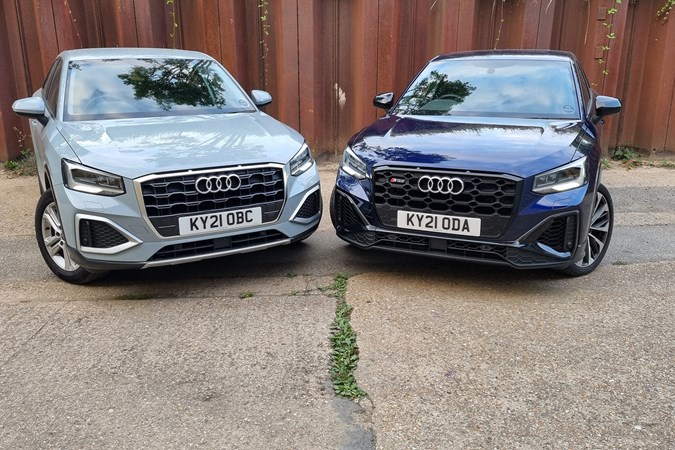
Sportier looks, more go…
It certainly looks sportier, with more aggressive bumpers on the outside plus figure-hugging seats, aluminium trim and a flat-bottomed steering wheel on the inside. I also appreciated the addition of dual-zone climate control rather than the basic air-con of my Sport. It’s a small feature, but one that won’t have you forever fiddling with the temperature in our changeable weather.
Does all that make it worth the extra cash? Not in my book. It certainly accelerated with far more urgency, always nice for A-road overtakes and joining motorways, yet economy in the high 30s was achievable on a long run. It was surprisingly comfy, with a firmer but not uncomfortable edge compared to my Q2, and it corners faster and flatter, too.
The trouble is that while it can cover ground far more quickly, it’s just not that much fun. The steering isn’t a great deal more precise than mine and it certainly doesn’t involve me with the driving experience any more. Similarly, you’ll find the same neutral balance in bends, with the front tyres always relinquishing grip over the rears. Yes, that four-wheel drive system will fire it out of a damp bend far more effectively than my front-wheel drive Q2, but it won’t make it any more playful.
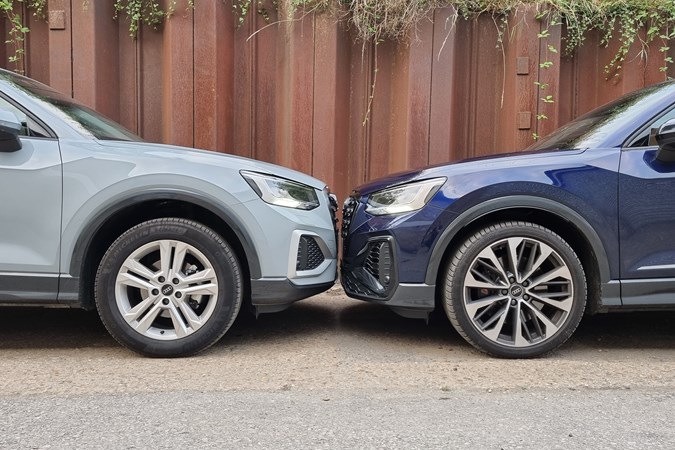
Swift and unflappable
Now, you can argue that an Audi ‘S’ car has always followed that formula. No matter where you are or how wet the road is, you know it’ll whisk you from A to B swiftly and with no more fuss than a regular Audi. For many, it’s a tempting formula, I just like performance cars and SUVs to be a bit more thrilling. If I want an exciting small SUV, I’d get a Puma ST and save myself several thousand pounds, thanks.
No, the Q2 makes far more sense as a plush runaround than a sports SUV. My car still has the same high-quality build, responsive infotainment system and its seats are still just as comfortable on a long journey. It’s engine may be weaker, but it’s gutsy enough for the everyday and usefully more economical to boot. And as no Q2 makes you want to drive for the fun of it, it handles more than well enough and is more comfortable to boot.
Besides, I missed my car’s punchy B&O stereo and wireless phone charger, not to mention the heated seats on a particularly cold morning. The morale of this story: don’t spend extra on a punchier engine, Sport trim and a few options is where it’s at.
Update 3: Inner calm? 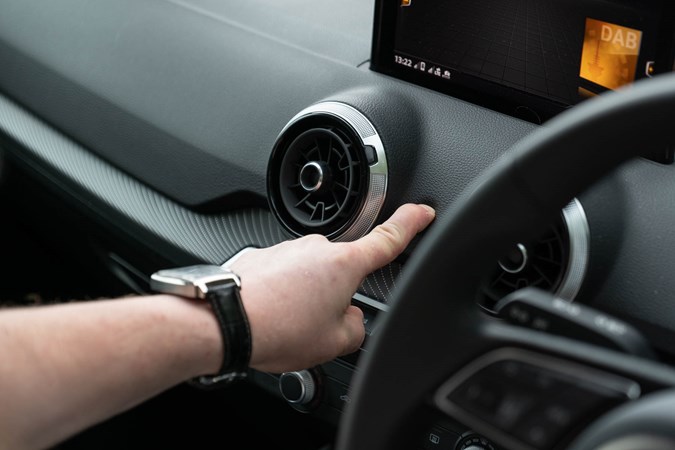
As I mentioned in the introduction to my Audi Q2, this is no spring chicken having first been introduced back in 2016. Even a recent facelift can’t disguise that this is now one of Audi’s oldest interiors, missing out on the angular design of the A3 with no touchscreens in sight and the infotainment system perched on the top of the dashboard and controlled by a rotary dial.
Even so, you won’t find me complaining about this one bit. That’s because I’d argue 2016 was about the high point of Audi interior design and quality. You’ll find far more soft touch plastics, sturdy controls and easy to use physical switches and dials than more recent offerings, while I find the infotainment system far less distracting to use on the move.
Old but gold
Sure, the option of tapping in an address on a touchscreen when stationary would be nice, but it’s easy to scroll through menus using the dial and the physical shortcuts around it make navigating even easier. Similarly, wireless Apple CarPlay and Android Auto would be handy, but plugging into a USB port is no hardship and charges my phone quicker than the wireless charging pad anyway.
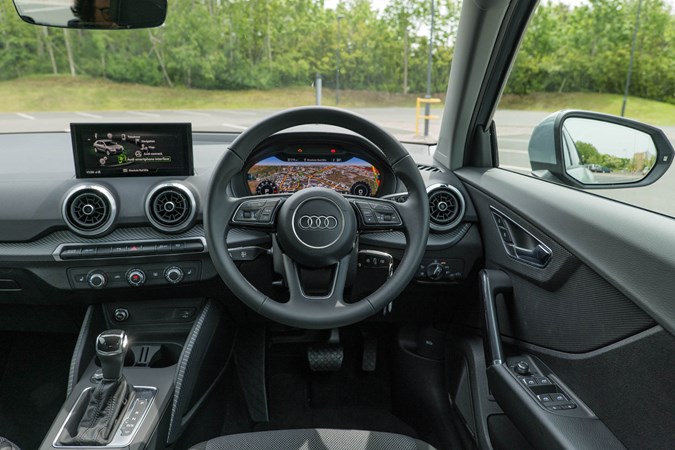
A white mark against it
In fact, there’s really only one bugbear that I’ve been unable to ignore ever since my wife pointed it out. While I was cooing over the fabric covered door cards, my better half immediately noticed that they were a magnet for dead skin cells, leaving a white residue every time you touched them. I did wonder if we should just moisturise a bit more, but I’ve never had this issue on an Alcantara-covered steering wheel, for instance.
Still, if this is my biggest complaint after three months of ownership, it just goes to show how little there is to grumble about.
Update 4: Will it baby?
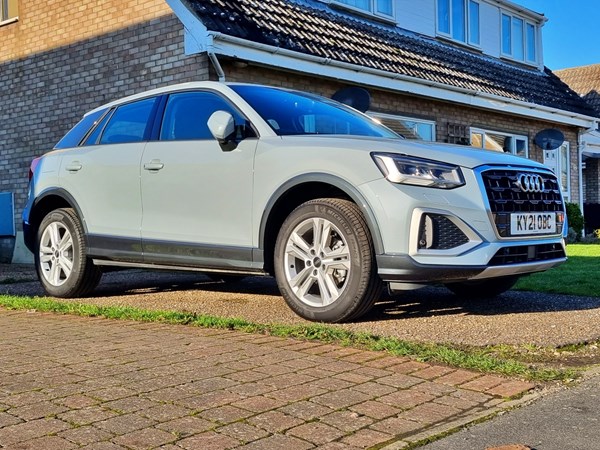
Despite everyone going SUV crazy over the last few years, I’ve never been a massive fan. I get why you’d want something with a raised ride height and four-wheel drive if you had muddy lanes to negotiate, but two-wheel drive SUVs like my Q2 don’t really have the ability to back up the looks.
So, what’s the point? Well, many point out the raised seating position not only gives you a better view out, it also makes it easier to load small children without knackering your back. Furthermore, you usually get a bigger boot than a similarly sized hatchback or estate simply because the body is taller. That also allows people to sit a bit more upright, helping with rear seat space, too.
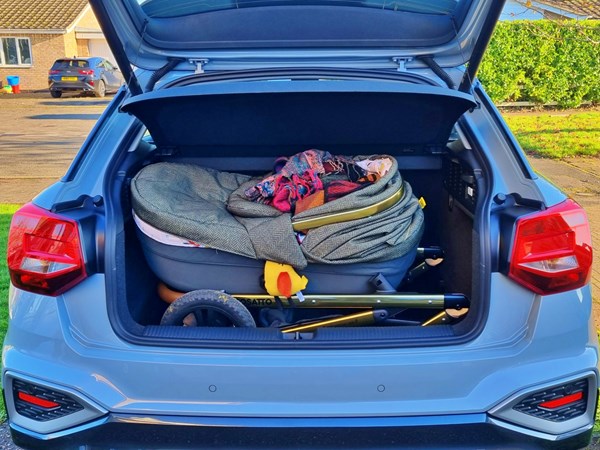
Putting theory into practice
All these seemed like sensible points, and with a baby of our own recently joining the family I could finally see if there was any truth to them. Some time with an Audi A4 Allroad estate while the Q2 was in for repair for a deer strike would make the perfect comparison, with my thoughts on that to be found in a separate long-term review of that car.
So, back to the Q2. With prams now shockingly big and vast amounts of other stuff required to keep our son clean and fed, I was worried the Q2’s boot would be too small. In fact, the pram slotted in easily sideways with just enough room left over for a changing bag and the lightest of shops. Impressively the Q2’s load cover could remain in place to hide everything, something that couldn’t be said of the Allroad.
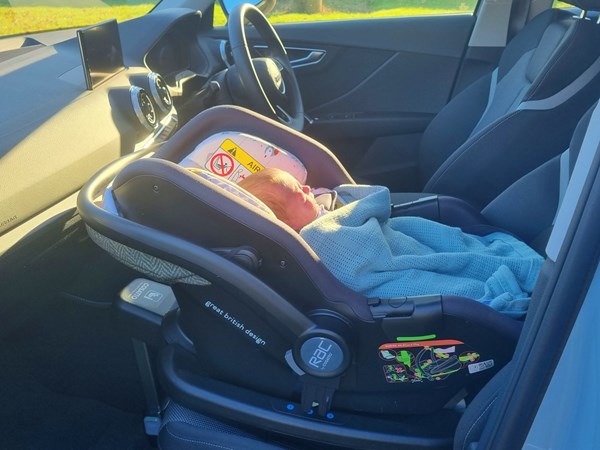
Sticking the boot in
That trick was made possible by the two-level boot floor being put in its lowest position, so you might not be so lucky if you’ve opted for a Quattro model or an optional spare tyre. That’s because these models have a shallower boot than those with front-wheel drive. My car’s low floor does leave a big loading lip to contend with though, the bulky buggy needing to be hauled up and over the entrance to the tailgate rather than slid straight in like on the Allroad.
Opening the glovebox revealed the switch to disable the front passenger airbag with the ignition key – a must to protect your baby in the event of an impact – and the Isofix mounts are easily visible. With Rupert’s baby seat in place, rear legroom is a bit on the tight side, but I still have enough to sit directly behind him to keep an eye while my wife drives. I am just under 5’ 4”, though.
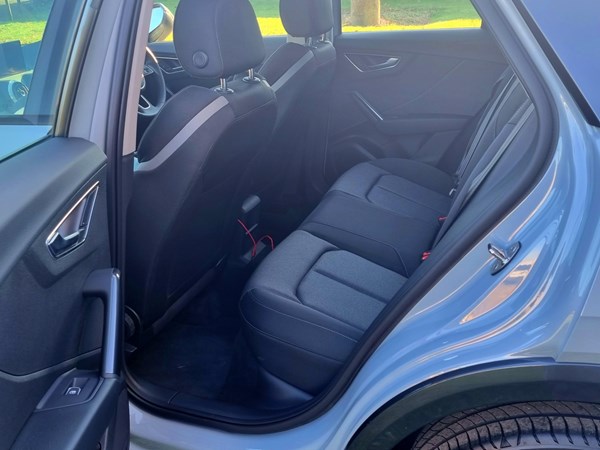
Essentials, not luxuries
We all fit then, but my better half still pines for the Allroad. Why? Well, that car’s three-zone climate control meant Rupert could be kept at a toasty 23 degrees while she enjoyed a brisk 17 degrees. Keyless entry and start also meant you weren’t fumbling around and she prefers the seats of the admittedly pricier Allroad. Still, climate control is on the options list as is keyless entry and start, while posher models get upgraded leather seats.
Nitpicking aside, I certainly ‘get’ why you might pick an SUV now. Sure, a bit more space would be better, but the Q2 is shorter than an Audi A3 yet significantly more practical, while that extra height does make loading Rupert that bit easier. I suspect this won’t be my last SUV.
Update 5: How hungry is the Q2 35 TFSI?
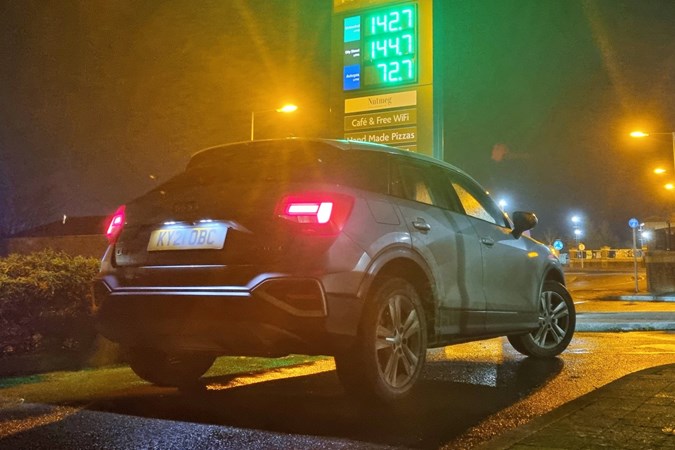
With petrol prices spiralling out of control of late, my Q2’s economy has been brought into sharp focus. Although in my first report I was pleased with the long-distance economy, a few thousand miles spilt between a couple of drivers and a wide variety of driving environments has revealed that its efficiency can vary greatly.
Officially my 1.5-litre Q2 35 TFSI S tronic is capable of 46.3mpg and emits 138g/km of CO2. Opting for a manual instead of my car’s automatic improves those figures to 47.9mpg and 134g/km, enough to lower the BIK company car tax rate by a whole percent.
A more frugal petrol?
Those figures aren’t at all bad for a little SUV with 150hp and a sub-9.0 second 0-62mph time, especially when you take a look at the 30 TFSI that sits below my 35 TFSI. With 110hp from its 1.0-litre three-cylinder engine, it takes a yawning 11.2 seconds to potter from 0-62mph yet its economy and emissions are barely any better than the 35 TFSI.
With a manual gearbox – no auto is offered – it’s capable of 48.7mpg and 131g/km. That’s less than 1mpg better than a manual 35 TFSI and it sits in the same BIK bracket if you’re a company car driver. If you’re wondering how this is possible, it’s because of a few clever tricks.
They include a smooth and swift acting stop-start system, the auto’s ability to ‘coast’ when you come off the throttle and something called cylinder deactivation. Put simply, when you’re tootling along the 35 TFSI only uses two cylinders to save fuel, squeeze the throttle a bit harder and the other two join in.
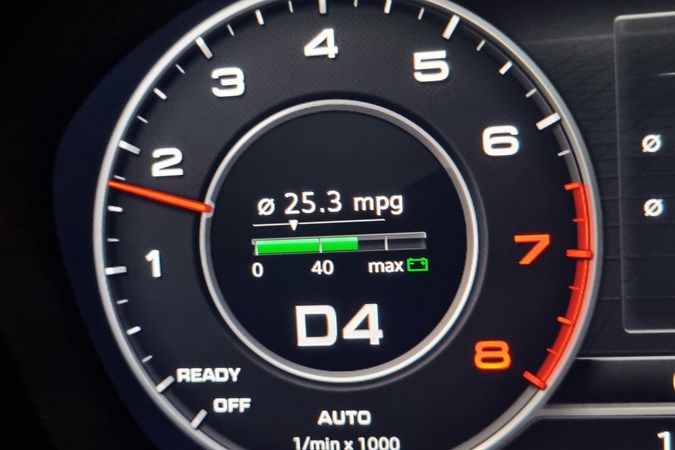
Impressively imperceptible
It’s a system that works exceedingly smoothly; the only tells are through the sharp and highly customisable Virtual Cockpit digital dials that are standard on Sport trim and up, and very impressive fuel economy. If you’re waiting for a ‘but’ here it comes. Drive very gently and the economy is very good indeed, start to use the performance on offer and the economy falls off a cliff.
Sitting in the back as my wife carefully drives our infant son and I, I’ve seen 45mpg and above regularly. In fact, a particularly gentle run saw an impressive 48mpg average. However, accelerate with a modicum of enthusiasm a few times on your trip and that figure quickly drops to below 40mpg.
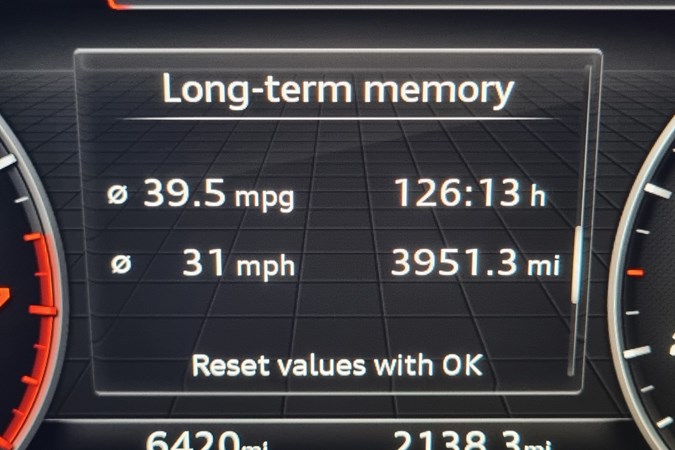
Should I have picked a 30 TFSI?
Of course, a slightly lighter right foot would do wonders to improve that, but I do wonder if the economy gap between the 30 TFSI and 35 TFSI might be significantly more in the real world. It’s something that I’ve pondered but given that the sluggish acceleration offered by the former has no place in a premium SUV in my mind, it’s not a theory I’m particularly keen to test.
Instead, I’d heartily recommend the 35 TFSI for its ability to post great economy figures when you’re careful and provide enough pace for most situations when the need arises. With plenty of T-junctions entering busy national speed limit roads and slow-moving tractors in my neck of the woods, being able to sprint up to 60mph in short order is very comforting.
Update 6: Goodbye Q2
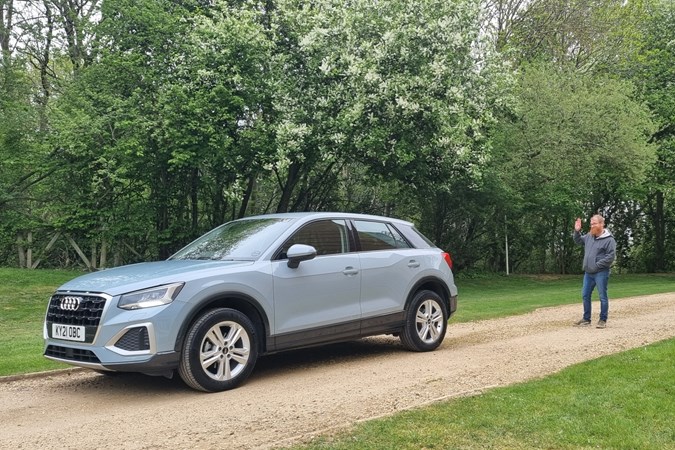
After over 5,400 miles, it’s time to say goodbye to ‘my’ Audi Q2. It’s proved a reliable workhorse, with the only minor gripe being a slight drag on the rear brakes when reversing. However, it’s fair to say my expanded family has outgrown it somewhat due to the arrival of our son Rupert.
There’s still plenty to like, with the 35 TFSI engine and seven-speed automatic gearbox providing a good blend of performance and economy. The 150hp 1.5-litre turbocharged petrol could sprint up to motorway speeds easily enough while A-road overtakes were largely stress free.
I say largely because the gearbox could be a little slow to kick down in Comfort mode, although flicking the lever to Sport mode did wake it up. Manual control was available, but without gearshift paddles on the steering wheel, it was rarely used. More to the point, the ‘box shifted smoothly and made long motorway commutes that bit more bearable.
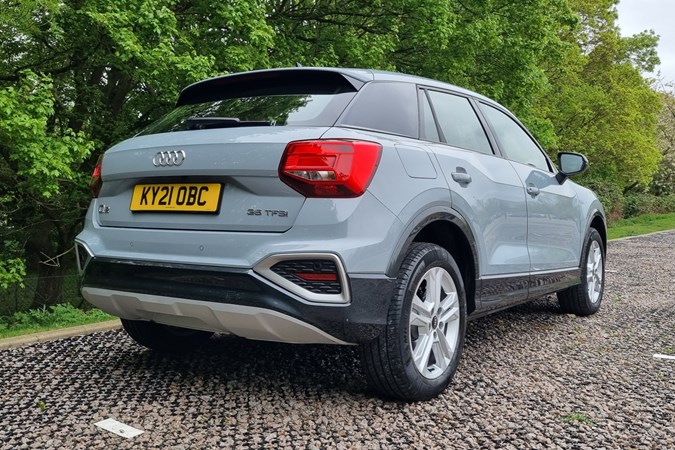
Comfort was good, with seats that supported your back well and suspension that smoothed off most bumps albeit with a slightly firm edge. The upshot was very tidy handling, with good balance, lots of grip and agility that was more hatchback than SUV.
The standard ‘progressive’ steering is only two turns lock-to-lock and is designed to get quicker the more you turn the wheel. That’s great when you’re manoeuvring, but the system did feel a little nervous and unnatural, even at the end of our loan. It contributed to the feeling that the Q2 was certainly capable, but not especially fun to drive, something that’s true even if the hot SQ2.
Miles per gallon would usually hover around the mid-forties, with gentle rural drives pushing it towards an impressive 50mpg. However, a house move has led to far more urban driving pushing the overall average down to 39.7mpg, a figure that’s not astounding but certainly more than palatable for day-to-day running.

That’s especially true given the plush interior that trumps newer Audis such as the current A3 for quality. OK, so the design is looking a little old these days, but you’ll find higher-grade plastics and a greater sense of solidity. Besides, it’s nice to have actual buttons and dials to control things rather than the fiddly touch sensitive icons that are becoming far too common.
However, while the electric tailgate (part of the recommended Comfort and Sound pack) was very handy and the boot was plenty big enough pre-Rupert, it’s almost entirely filled by his pushchair and changing bag, leaving the rear seating area as a secondary cargo bay. That’s a pain when we were out as a family for the day, but a weekend away requires careful packing and a hemmed-in rear passenger.
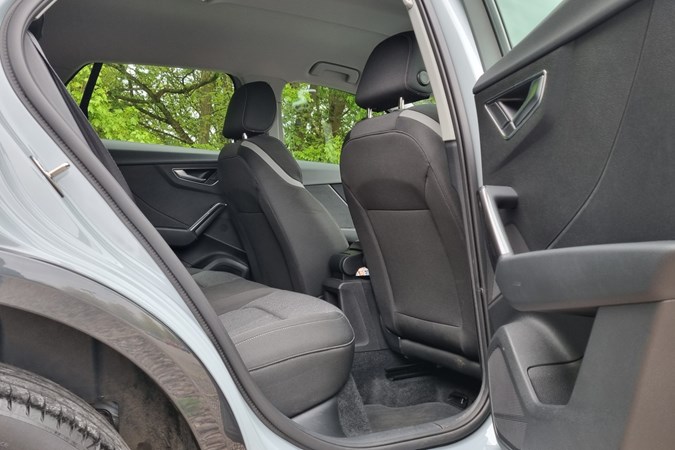
Similarly, going out with the grandparents leaves three of you wedged into the rear seats with little shoulder room and not much in the way of rear legroom thanks in part to the chunky Isofix seat Rupert travels in up front. All it took was one trip out for them to favour travelling separately in their own car rather than getting a ride with us moving forwards.
So where does that leave the Q2? Well, it’s still a highly recommendable small SUV that certainly proved itself worthy of a third-place finish in a big group test against rivals and the price premium it commands over most less posh rivals. In that company, space was average for the class, too.
However, we’d advise plumping for something a bit bigger should the pitter patter of tiny feet be on the horizon unless you’re treating it as a second car or particularly enjoy a game of sardines.
| Audi Q2 35 TFSI DSG Sport |
|
| Current mileage | 7,861 |
| Real-world average fuel economy | 39.7mpg average |
| Official combined fuel economy (WLTP figures) | 46.3mpg |
| Parkers ‘MPP’ (Miles Per Pound) calculation | 5.5 – 5.6 |
| Car joined Parkers fleet | June 2021 |



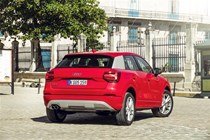
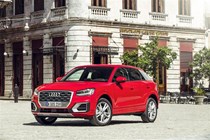
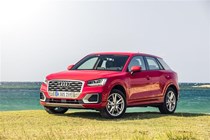
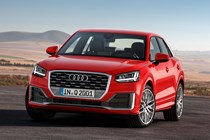
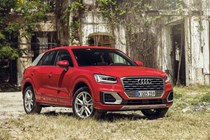
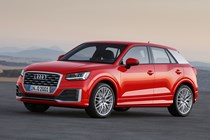
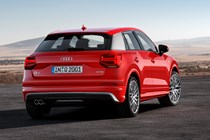
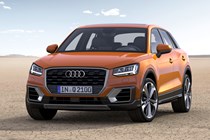
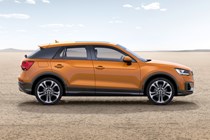
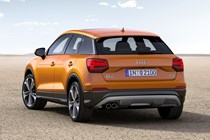
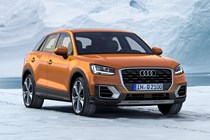
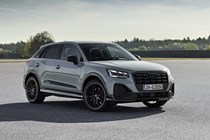
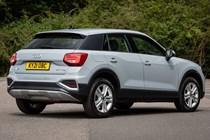

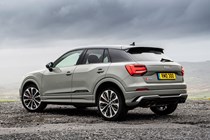
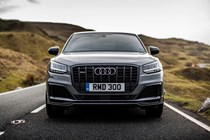
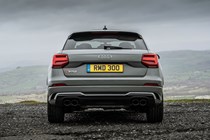
.jpg)
.jpg)
.jpg)
.jpg)
.jpg)
.jpg)
.jpg)
.jpg)
.jpg)
.jpg)
.jpg)
.jpg)
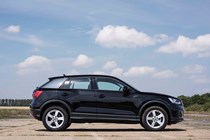
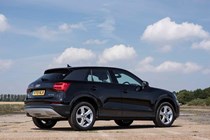
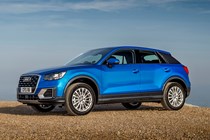
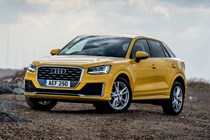
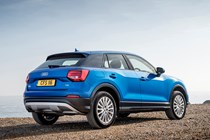
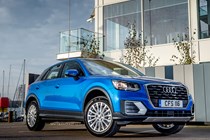
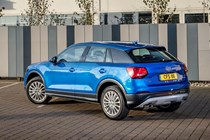
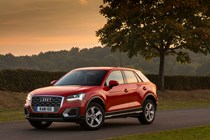
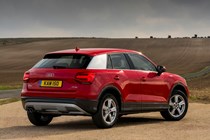
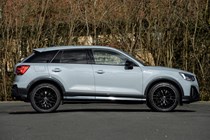
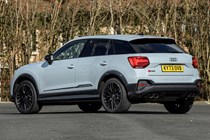
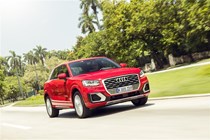
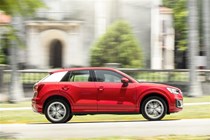
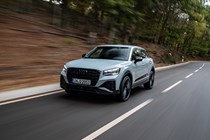
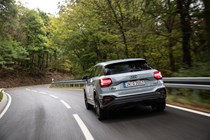
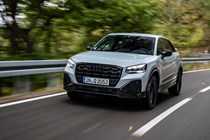
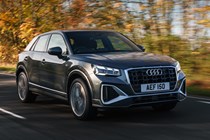
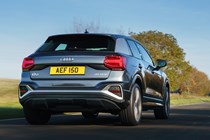
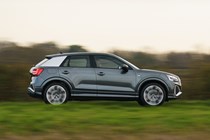
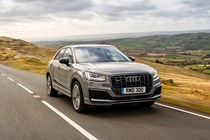
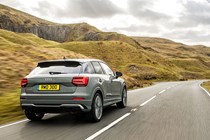
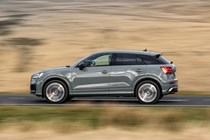
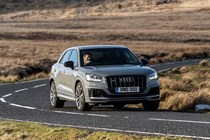
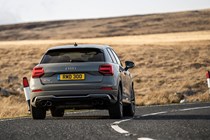
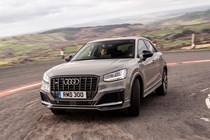
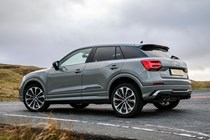
.jpg)
.jpg)
.jpg)
.jpg)
.jpg)
.jpg)
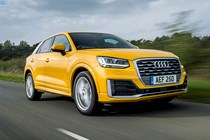
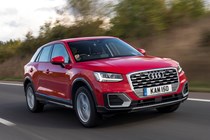
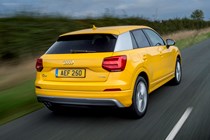
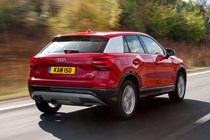
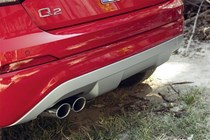
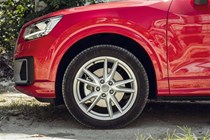
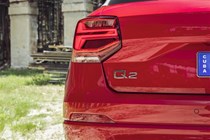
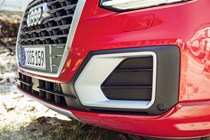
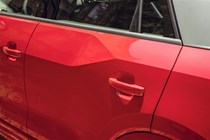

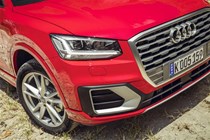
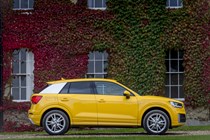
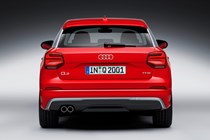
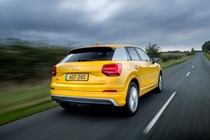
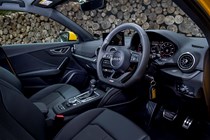
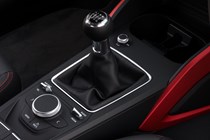
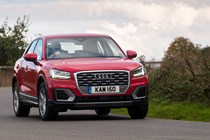
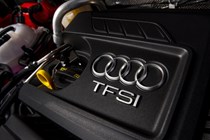
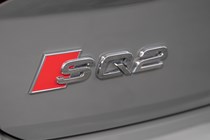
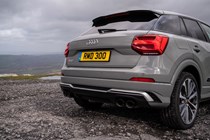
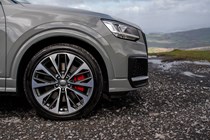

.jpg)
.jpg)
.jpg)
.jpg)
.jpg)
.jpg)
.jpg)
.jpg)
.jpg)
.jpg)
.jpg)
.jpg)
.jpg)
.jpg)
.jpg)
.jpg)
.jpg)
.jpg)
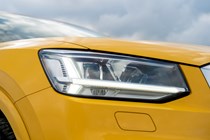
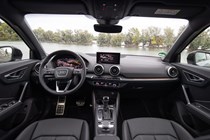
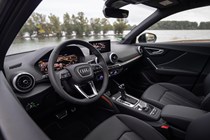
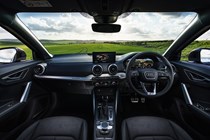
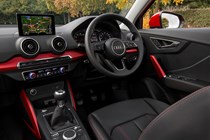
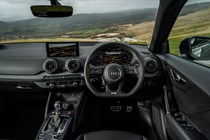
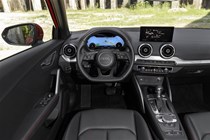
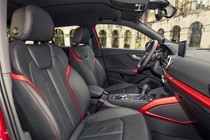
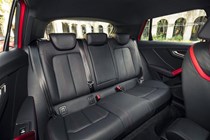
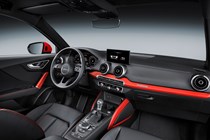
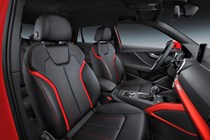
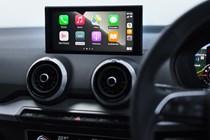
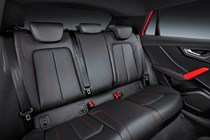
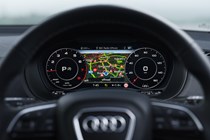
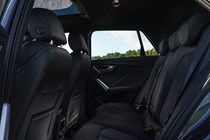
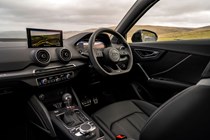

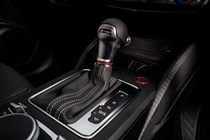
.jpg)
.jpg)
.jpg)
.jpg)
.jpg)
.jpg)
.jpg)
.jpg)
.jpg)
.jpg)
.jpg)
.jpg)
.jpg)
.jpg)
.jpg)
.jpg)
.jpg)
.jpg)
.jpg)
.jpg)
.jpg)
.jpg)
.jpg)
.jpg)
.jpg)
.jpg)
.jpg)
.jpg)
.jpg)
.jpg)
.jpg)
.jpg)
.jpg)
.jpg)
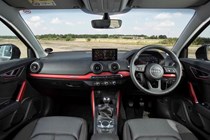
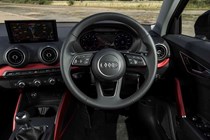
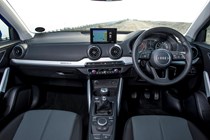
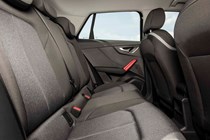
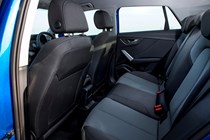
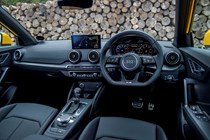
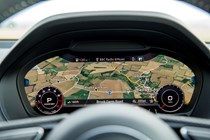
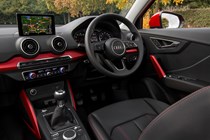
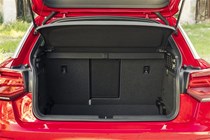
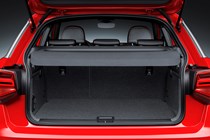
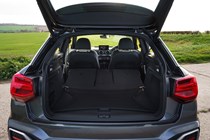
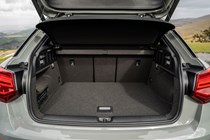
.jpg)
.jpg)
.jpg)
.jpg)
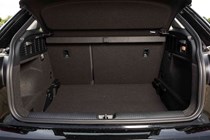
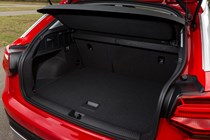
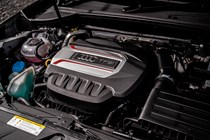
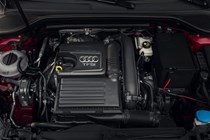
.jpg)
.jpg)
.jpg)
.jpg)
.jpg)




















.jpg?quality=50)
.jpg?quality=50)
.jpg?quality=50)
.jpg?quality=50)
.jpg?quality=50)
.jpg?quality=50)
.jpg?quality=50)
.jpg?quality=50)
.jpg?quality=50)
.jpg?quality=50)
.jpg?quality=50)
.jpg?quality=50)


























.jpg?quality=50)
.jpg?quality=50)
.jpg?quality=50)
.jpg?quality=50)
.jpg?quality=50)
.jpg?quality=50)






















.jpg?quality=50)
.jpg?quality=50)
.jpg?quality=50)
.jpg?quality=50)
.jpg?quality=50)
.jpg?quality=50)
.jpg?quality=50)
.jpg?quality=50)
.jpg?quality=50)
.jpg?quality=50)
.jpg?quality=50)
.jpg?quality=50)
.jpg?quality=50)
.jpg?quality=50)
.jpg?quality=50)
.jpg?quality=50)
.jpg?quality=50)
.jpg?quality=50)


















.jpg?quality=50)
.jpg?quality=50)
.jpg?quality=50)
.jpg?quality=50)
.jpg?quality=50)
.jpg?quality=50)
.jpg?quality=50)
.jpg?quality=50)
.jpg?quality=50)
.jpg?quality=50)
.jpg?quality=50)
.jpg?quality=50)
.jpg?quality=50)
.jpg?quality=50)
.jpg?quality=50)
.jpg?quality=50)
.jpg?quality=50)
.jpg?quality=50)
.jpg?quality=50)
.jpg?quality=50)
.jpg?quality=50)
.jpg?quality=50)
.jpg?quality=50)
.jpg?quality=50)
.jpg?quality=50)
.jpg?quality=50)
.jpg?quality=50)
.jpg?quality=50)
.jpg?quality=50)
.jpg?quality=50)
.jpg?quality=50)
.jpg?quality=50)
.jpg?quality=50)
.jpg?quality=50)












.jpg?quality=50)
.jpg?quality=50)
.jpg?quality=50)
.jpg?quality=50)




.jpg?quality=50)
.jpg?quality=50)
.jpg?quality=50)
.jpg?quality=50)
.jpg?quality=50)